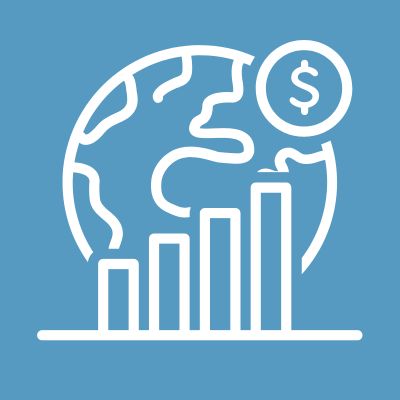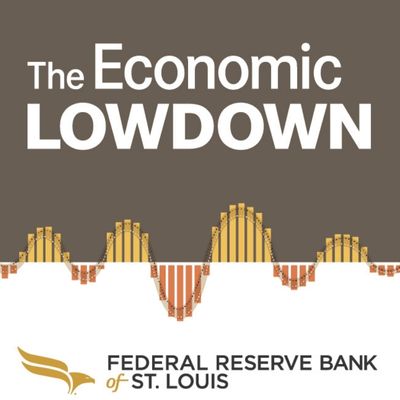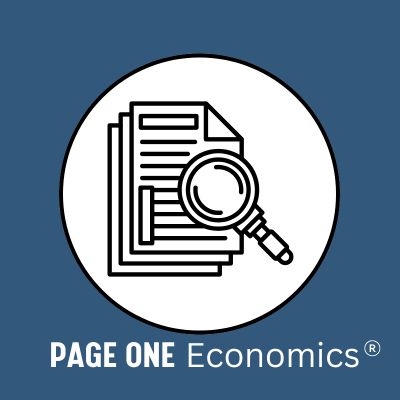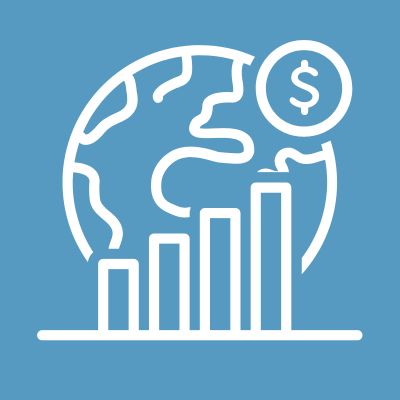Production Possibilities
Develop the production possibilities frontier model.
{{searchResultSnippet}}
 Back to All
Back to All

The study of economics is built on the foundation of three very important concepts: scarcity, choice, and opportunity cost. This video assignment uses these three concepts to explain why there is no such thing as a free lunch.
Imagine that the friendly neighborhood pizza restaurant set up a table full of pizzas outside your school about lunchtime and put up a sign that said "Pizza and Soda - $0.00." Wouldn't this be a free lunch?
In this episode of the Economic Lowdown we'll find out if there is such a thing as a free lunch.
Lesson #1: Scarcity The study of economics begins with the concept of scarcity. Scarcity describes the condition in which our wants are greater than the resources available to satisfy those wants. We face the problem of scarcity every day whether we think about it or not. It might be nice to dream about a world without scarcity, but the sad reality is that the things we want are scarce because the resources needed to produce them are scarce.
If you want a new skateboard, it takes wood, tools, and labor (all of which are resources) to produce that skateboard. The people who own the wood, the tools, and the labor want something in return for the use of their resources because their resources could have been used in other ways. If the wood were not used for skateboards, it might be used to build windows or baseball bats. So, the first lesson is scarcity, which says that society does not have enough resources to produce all the goods and services that people want.
Lesson #2: Choice
This condition of limited resources to meet unlimited wants means that we must constantly make choices about which of our wants to satisfy. For example, because time is scarce you must choose whether you will sleep away the morning or go to school. You must choose whether to spend or save your allowance. Scarcity prohibits you from saving and spending the same dollar; you must choose. If you decide to spend it, you may choose whether to buy a video game or a DVD of your favorite movie. Tough choice, huh? If you choose to save your allowance, will you save it for a car or for college? On a broader level, scarcity forces society to choose how to use resources, as well. Will a piece of land be used for a park or for housing? Will tax dollars be used for healthcare or for education?
Lesson #3: Opportunity Cost
When people make choices they incur a cost. If you choose to buy a video game instead of a movie, there is a cost--not the price you pay for the video game, but opportunity cost. Economists define an opportunity cost as the most highly valued opportunity given up when you make a choice. So the opportunity cost of buying the video game is that you cannot buy the DVD. The opportunity cost is the opportunity lost. The opportunity cost of spending money is the lost opportunity to save the money. For society, the opportunity cost of using land for a park is the housing given up. The opportunity cost of spending tax revenues on healthcare is the lost opportunity to spend that same money on education. Keep in mind that the opportunity cost is the most highly valued opportunity given up.
Think about this: When your alarm went off this morning, you had a number of options open to you. Assuming you first chose to get out of bed, you could have chosen to go to school, watch TV, or go to the mall. Now, what is the opportunity cost of going to school? Is it both watching TV and going to the mall?
No.
Because of the scarcity problem, you would have only been able to do one of those options if you weren't at school, so you are only giving up the opportunity to do one of them, more specifically the one you were most likely to do. So, if you were to place a value on your choices you would choose the activity you valued most, which was go to school, your opportunity cost would be the one on which you placed the next highest value-probably watching television.
Lesson #4: There is no free lunch.
This brings us to our last lesson. Nobel Laureate Milton Friedman was fond of saying, "There is no such thing as a free lunch." You've now come up on the pizza stand offering pizza and soda for $0.00. Wouldn't this be a free lunch? You didn't pay a price for the pizza because the price was zero.
So, it may not have cost you in terms of money, but remember: any time you make a choice, there is a cost-an opportunity cost. With his famous quote, Milton Friedman reminds us of the lessons we have learned today: Because of scarcity we must choose, and choice means that there is an opportunity cost. So, the reason there is no free lunch is that your choice to eat pizza out on the sidewalk in front of your school means that you are giving up the opportunity to dine elsewhere, for example eating in the cafeteria with friends.
These three concepts-scarcity, choice, and opportunity cost-help form the foundation for economic thinking and reasoning.

Production Possibilities
Develop the production possibilities frontier model.

How Do I Use Economics In My Life?
Explore how economics is a part of students’ everyday lives.

Opportunity Cost
Introduce choice, scarcity, and opportunity cost.

Choices Are Everywhere: Why Can't We Just Have It All?
Discuss opportunity costs and scarcity.

Factors of Production
Discuss the factors of production.

Is College Still Worth the High Price?
Declining college enrollment raises doubts about its value for high school graduates.

Circular Flow
Explain the circular flow model.

Demand
This video assignment explains the concept of demand.

Supply
Introduce the concept of supply.

Equilibrium
Explain the concept of equilibrium.

Inflation
Introduce the concept of inflation.

Gross Domestic Product
Introduce the concept of GDP.

The Labor Market
Explain the basics of the labor market.

Unemployment
Introduce the concept of unemployment.

Externalities
Introduce the concept of externalities.

Factors of Production
Explain the four factors of production.
{{resourceTitle}}
{{resourceBlurb}}